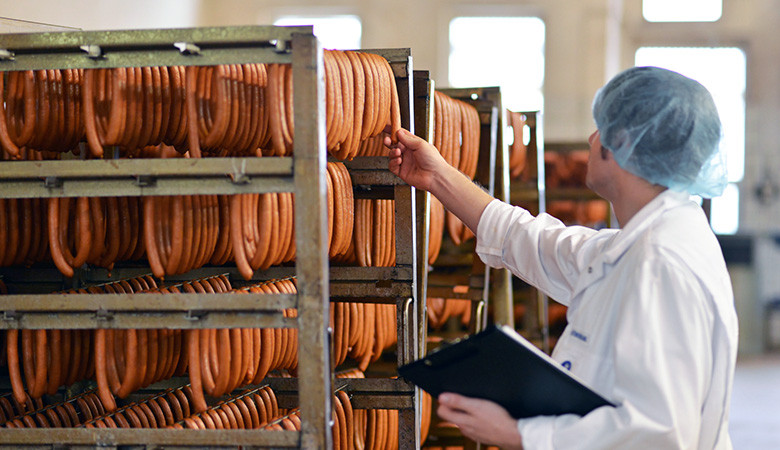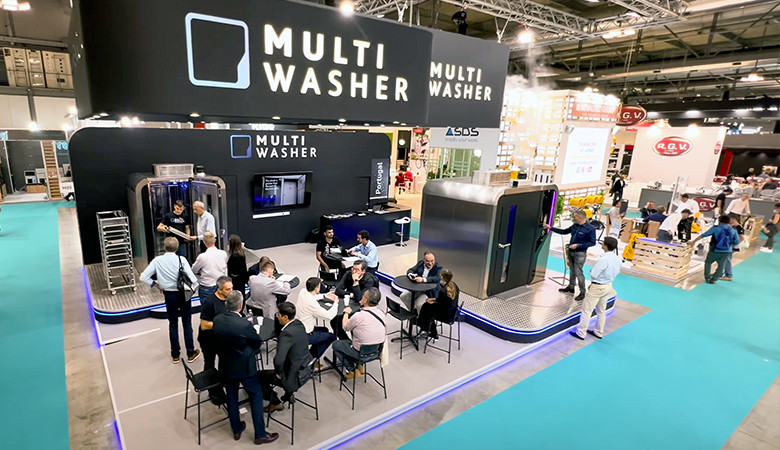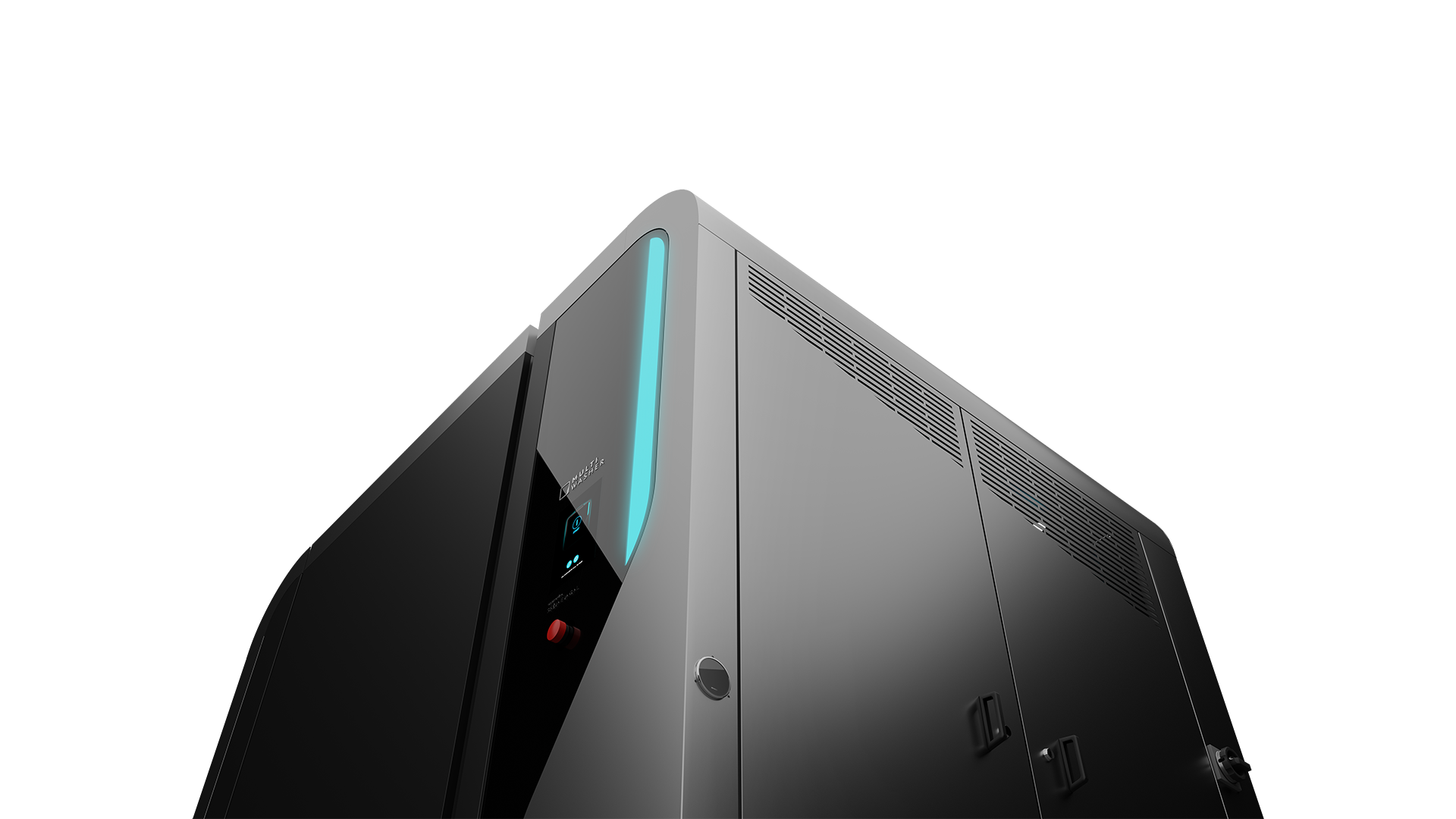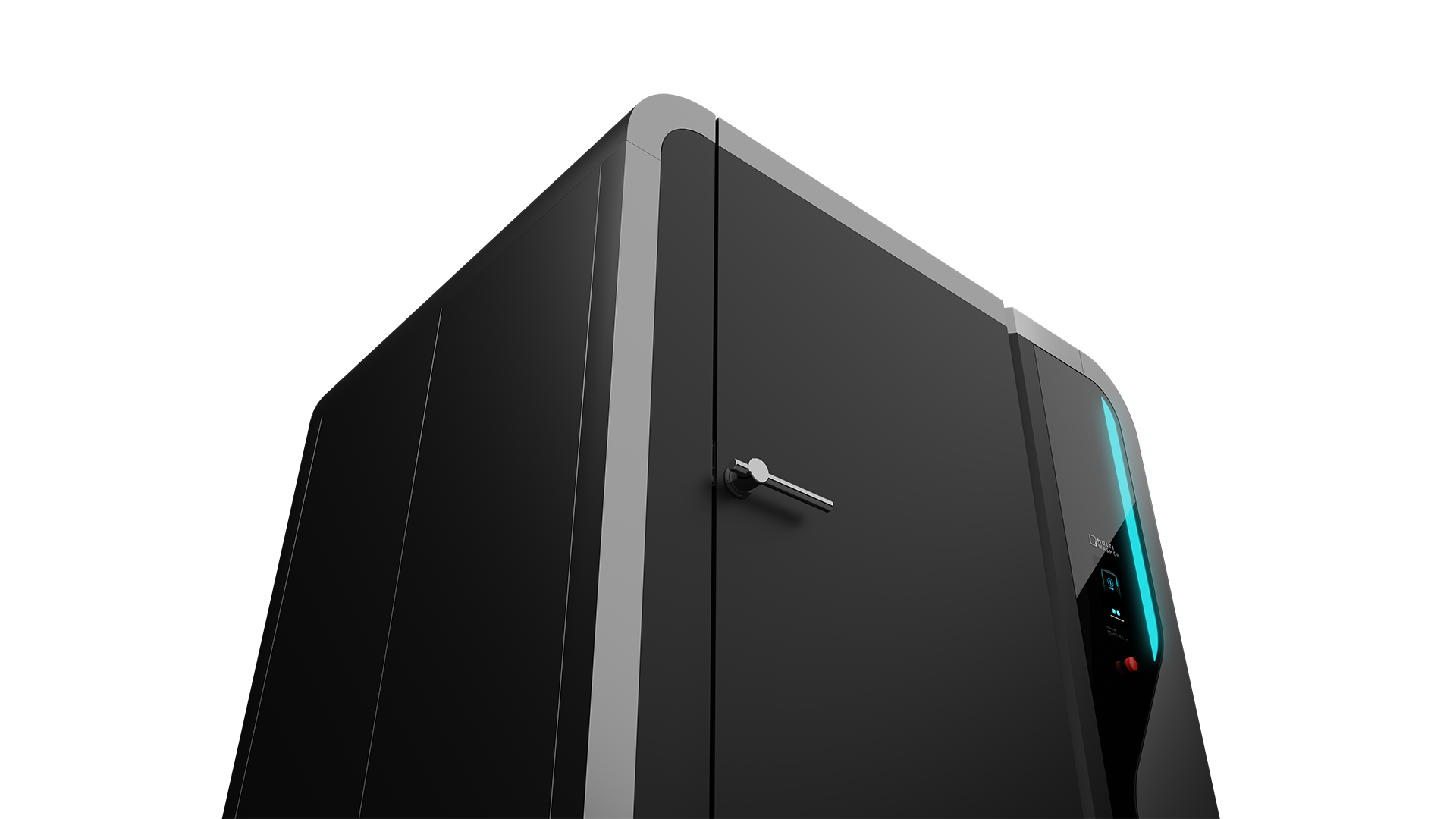Industrial washing / Articles
Choosing the right parts washer: a complete guide
If you’re looking for the best parts washer for your business, discover the key factors to consider, like washing volume, efficiency, and space constraints.

 14 minutes of reading
14 minutes of reading
2024-11-15 09:04:28
For companies in the food processing industry, having an effective parts washer is critical to keeping equipment running smoothly and extending its lifespan. Investing in the right washer ensures that production flows uninterrupted, minimizing downtime. But with so many options available, how do you choose the right machine for your needs? Learn about the most important factors to consider – such as washing capacity, energy efficiency, and available space – and find the ideal parts washer to suit your operation’s requirements.
What is a parts washer?
A parts washer is a specialized industrial washing machine designed to remove dirt, grease, oil, and other contaminants from equipment parts. In the food processing industry, these washers are essential for maintaining hygiene standards and preventing bacterial contamination. Given the variety of substances encountered – ranging from oils and fats to food residues – parts washers are crucial for washing mechanical components used in food production, packaging, and handling. These machines ensure that all components are thoroughly washed and disinfected, reducing the risk of contamination and helping maintain the integrity of the food products.
What parts can industrial washers handle?
Here are the essential parts that industrial washers can wash efficiently, ensuring your operations stay hygienic, safe, and productive.
1. Food processing equipment components
Parts like blades, slicers, and mixers used in food production can be tough to wash manually due to food residue, grease, and oil build-up. Industrial washers are designed to handle these components, ensuring that all surfaces are washed thoroughly and bacteria-free, essential for preventing cross-contamination.
2. Grates and exhaust hoods
In commercial kitchens and food preparation areas, grates and exhaust hoods gather grease and food particles, becoming a fire hazard and compromising air quality. Parts washers ensure these elements are washed effectively, extending their lifespan and ensuring compliance with health and safety regulations.
3. Filters
Filters are essential for removing impurities from fluids or air in many industries, whether they’re used in oil systems, air purification, or hydraulic systems. Over time, these filters accumulate dirt, dust, or grease, making them less effective. A parts washer can thoroughly wash these filters, ensuring they remain efficient in maintaining orderly fluids and air flow.
4. Valves
Valves regulate the flow of liquids and gases in various mechanical systems, from ball valves in pipelines to check valves in hydraulic circuits. These components are prone to build-up from fluid residues, scale, and rust. Industrial washers can effectively wash these hard-to-reach areas, keeping valves functioning smoothly.
5. Belts
Belts transfer power between pulleys, and they are subject to wear from dust, oil, and debris over time. Washing belts can remove these contaminants, reducing the chances of slippage and maintaining their tensile strength for continued operation.
6. Seals
Seals are used to prevent leakage of fluids or gases in mechanical systems. These seals often collect oil, grease, and dirt, which can lead to failures if not washed properly. A parts washer can wash the seals, ensuring that they maintain their effectiveness in keeping systems leak-free.
7. Pumps
Pumps move liquids or gases and are critical for many industrial processes. Over time, they collect fluid residues, dirt, and particulates. Washing the pump components ensures that they maintain their efficiency, reducing the risk of clogging or breakdown.
8. Sensors
Sensors like proximity sensors and pressure sensors detect physical changes in machinery. Dust and dirt can interfere with their readings, leading to inaccuracies. Washing these components ensures accurate measurements and performance.
9. Chains
Chains, such as roller or conveyor chains, transmit power and are subject to dirt, oil, and debris. Washing these chains helps maintain their flexibility and strength, ensuring they continue to function without excessive wear.
Advantages of a parts washer
Investing in a parts washer can bring numerous benefits to businesses that rely on well-maintained equipment. Here are some key advantages:
Superior washing efficiency
Parts washers deliver deep and consistent washing that manual processes can’t match. They’re especially effective for reaching complex or tight areas that traditional methods would struggle with.
Reduced labour costs
Automating the washing process frees up your workforce to focus on more critical tasks, saving time and reducing manual effort.
Extended equipment lifespan
Regularly washed parts last longer. By removing contaminants like grease and grime, you reduce wear and tear on machinery, ultimately lowering the risk of breakdowns. Also, it requires less handling, reducing the risk of deterioration from drops or improper contact.
Environmentally friendly options
Many modern parts washers are designed to be eco-friendly, using solutions such as recycling the wash water, reducing chemical waste and environmental impact. MultiWasher, an industrial washing machine developed by Somengil, is a perfect fit for businesses focused on sustainability, as it incorporates advanced water-recycling technology and operates with minimal chemical usage, making it an environmentally responsible choice without sacrificing washing performance.
Compliance with industry standards
In certain industries, like food production or pharmaceuticals, maintaining stringent hygiene standards is mandatory. Parts washers ensure that components are washed to meet industry regulations.
How does a parts washer work?
Parts washers use a combination of water, solvents, and mechanical action to wash components. While the process can vary slightly, here’s a general breakdown:
1. Loading the parts
The parts to be washed are placed inside the washer, either on racks, trays, or in baskets, depending on their size and shape.
2. Washing
Heated water combined with washing agents is applied to the parts using high-pressure jets. Then, clean water rinses away any remaining detergent or debris.
3. Drying
Some parts washers feature integrated drying systems, using air or heat to dry the parts, making them ready for immediate use. However, many machines on the market lack this feature, requiring additional drying time or equipment. MultiWasher, on the other hand, includes a built-in drying system, ensuring your parts are thoroughly washed and dried in one seamless process.
How to choose the right parts washer for your business
Selecting the right parts washer for your business is crucial to achieving the best washing results. Consider the following factors when making your decision:
1. Assess your washing volume and speed needs
When choosing a parts washer, one of the key factors to evaluate is how much volume your business handles and how quickly you need parts washed. If you’re in a high-demand industry where parts are used and washed in rapid cycles, choosing a washer that can handle significant throughput without compromising performance is essential. A slow washing process can lead to costly bottlenecks and downtime, which you’ll want to avoid at all costs.
MultiWasher excels in this area, particularly for the food processing industry. It is designed to efficiently wash large batches of equipment parts in a single cycle while maintaining the same precision when handling smaller loads. Also, we configure the racks for each type of part to meet your specific needs, ensuring smooth operations without unnecessary delays or downtime. This flexibility is particularly beneficial in food processing, where efficiency and hygiene are paramount.
2. Check space limitations
Industrial settings are often crowded with essential equipment, so the last thing you need is a parts washer that takes up more space than necessary. Efficient use of space is critical, especially when trying to maintain flowing workflows or fit in additional equipment as your business grows. Some businesses may even have restrictions on where equipment can be placed due to layout, safety, or accessibility requirements.
MultiWasher has been designed with space efficiency in mind, offering a compact footprint without sacrificing power or washing capacity. This makes it an ideal solution for businesses that have limited room but still require a machine that can handle heavy-duty washing tasks.
3. Prioritize energy and water efficiency
Energy consumption and water usage are fundamental considerations for businesses, not just in terms of reducing operational costs, but also in minimizing environmental impact. Parts washers can be energy-intensive, especially those that use heated water and high-pressure systems, which can quickly drive-up utility bills. Finding a solution that balances effective washing with efficient resource usage is crucial for long-term sustainability.
MultiWasher was designed with efficiency in mind. It features advanced water-recycling systems that reduce water consumption, cutting down on both costs and waste. In addition, its energy-efficient design ensures that the washer uses less power to maintain washing cycles, without sacrificing performance. By choosing MultiWasher, businesses can make a smarter, more sustainable choice.
4. Explore drying options
After a thorough wash, parts need to be dried quickly and effectively to prevent rusting or damage, especially if they’re made of metal or other sensitive materials. In some cases, businesses may need to use parts immediately after washing, which means waiting for them to air-dry isn’t an option. So, investing in a washer with built-in drying capabilities is paramount.
MultiWasher comes with integrated drying systems, offering a fast and efficient solution for drying parts right after they’re washed. It ensures your parts are completely dry by the time the washing cycle finishes, so they’re ready for immediate use or packaging. This eliminates the need for manual drying or additional equipment, helping you maintain a continuous workflow.
5. Choose a washer that’s easy to maintain
Industrial equipment needs regular maintenance to perform optimally, and parts washers are no different. But frequent downtime for maintenance can slow down operations, especially in fast-paced environments.
What you need is a reliable machine that’s easy to maintain, minimizing interruptions and keeping your business running efficiently. MultiWasher has been designed to make maintenance as simple as possible, with full support from Somengil.
6. Balance features and budget
Choosing a parts washer is a significant investment, so it’s important to find one that offers the right balance between features and budget. While there may be economical options on the market, they might not deliver the performance or long-term value your business needs. On the other hand, going for a higher-end model can offer significant benefits, such as better efficiency, reduced operating costs, and longer machine life – all of which can save you money over time.
MultiWasher offers state-of-the-art washing technology, energy efficiency, and minimal maintenance needs – all at a competitive price point. This makes it an excellent investment for businesses looking to optimize their washing processes.
MultiWasher, the parts washer every company needs
When it comes to finding the right parts washer for your business, you want a solution that grows with your future demands. MultiWasher is designed with versatility, efficiency, and ease of use in mind, making it the perfect fit for companies across all industries. Whether you’re looking for energy savings, flexibility in washing different parts, or a machine that saves valuable space, MultiWasher ticks all the boxes. Its advanced features, low maintenance requirements, and customizable settings ensure that it will become an integral part of your operations, increasing productivity and reducing costs.
Don’t settle for less. MultiWasher is a reliable partner in keeping your equipment parts washed, efficient, and ready for action. Contact us today to learn how MultiWasher can level-up the way you handle parts washing.
You may also like

Industrial washing / Articles
Rack washers: what is it, how it works and how to pick one
Discover how rack washers redefine industrial washing with powerful performance, ease of use, and cost-saving benefits. Learn how to choose the r...
Posted in 2024-10-31

Industrial washing / Articles
HostMilano 2023: a journey to the centre of international food service
We were at HostMilano, one of the biggest international food service and hospitality fairs. Find out what’s new.
Posted in 2024-01-03























 Portugal
Portugal United Kingdom
United Kingdom United States
United States France
France Spain
Spain Germany
Germany Romania
Romania Italy
Italy Czech Republic
Czech Republic Finland
Finland Hungary
Hungary Slovakia
Slovakia Greece
Greece Lithuania
Lithuania South Korea
South Korea Russia
Russia Saudi Arabia
Saudi Arabia Poland
Poland Brasil
Brasil Hebrew
Hebrew